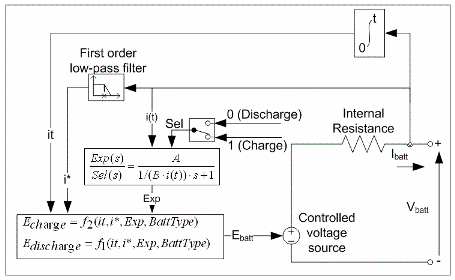Bayview-BOOM
Mechanical
I'm trying to understand the load-resistance of an A123 Nanophosphate High Power Lithium Ion cell.
My understanding is that resistance increases as the cell charges.
The datasheet says "Internal Impedance (1kHz AC typical, mΩ) 8". I don't understand what that means.
Here's my (probably incorrect) attempt to apply Ohm's Law, at the low-SOC and full-SOC of the cell:
Low SOC
charging at 4A
R = V/I
R = 2.5/4
R = 0.625
High SOC
charging at 0.00001A
R = 3.7/0.00001
R = 370K
My understanding is that resistance increases as the cell charges.
The datasheet says "Internal Impedance (1kHz AC typical, mΩ) 8". I don't understand what that means.
Here's my (probably incorrect) attempt to apply Ohm's Law, at the low-SOC and full-SOC of the cell:
Low SOC
charging at 4A
R = V/I
R = 2.5/4
R = 0.625
High SOC
charging at 0.00001A
R = 3.7/0.00001
R = 370K

